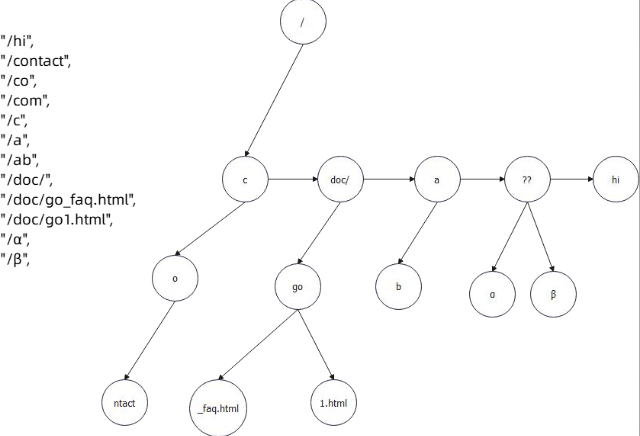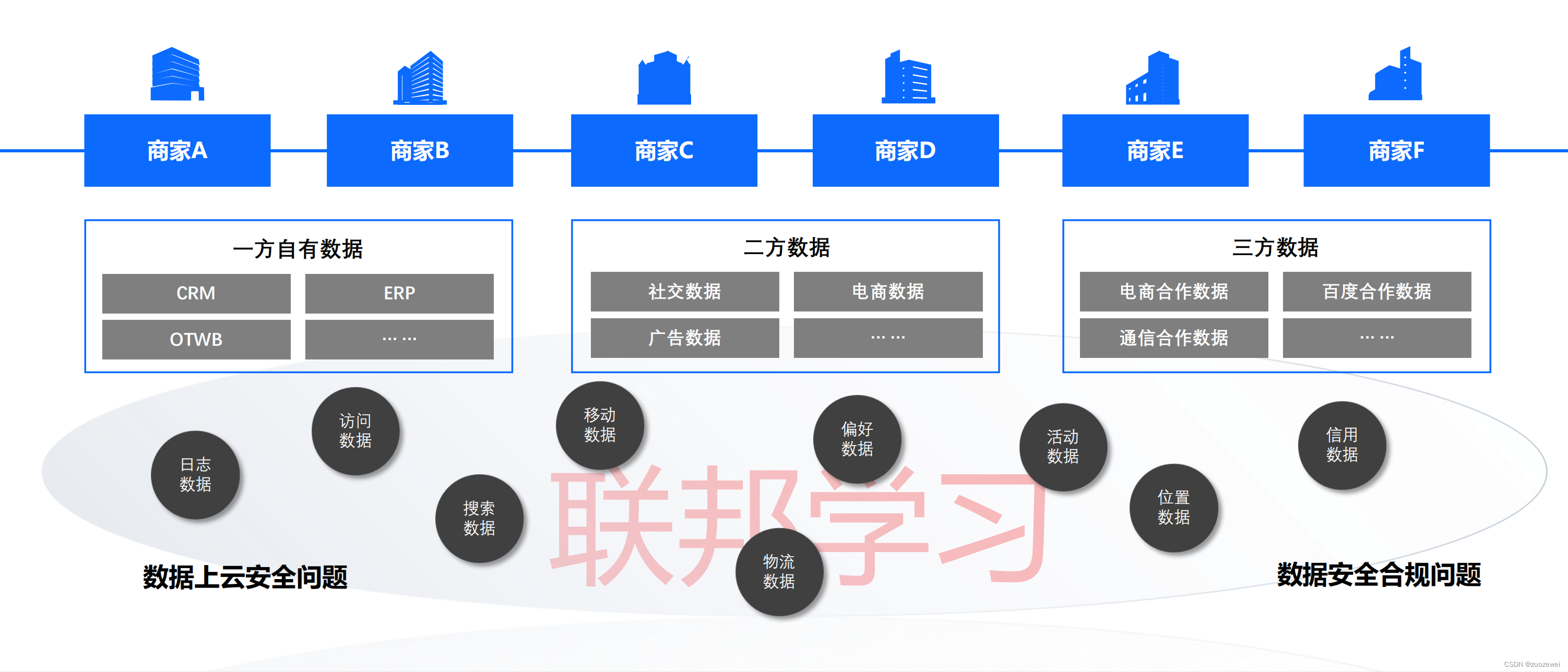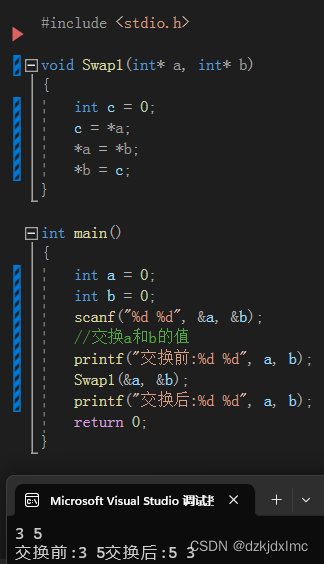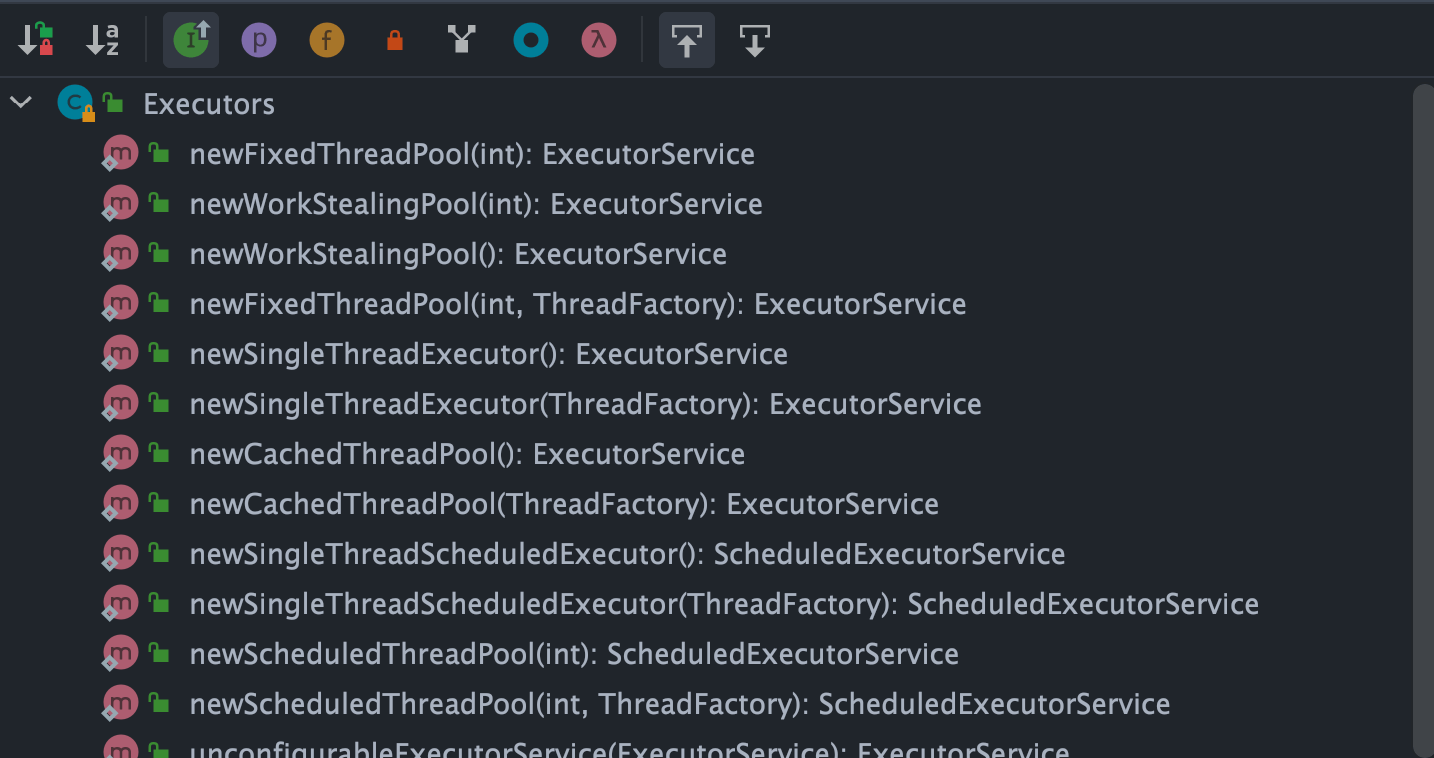Server & 路由树
Server
Web 核心
对于一个 Web 框架,至少要提供三个抽象:
- Server:代表服务器的抽象
- Context:表示上下文的抽象
- 路由树
Server
从特性上来说,至少要提供三部分功能:
- 生命周期控制:即启动,关闭,生命周期的回调;
- 路由注册接口:提供路由注册功能;
- 作为 http 包到 Web 框架的桥梁
http.Handler接口
http 包暴露了一个接口 Handler。
它是我们引入自定义 Web 框架相关的连接点。
// ListenAndServe listens on the TCP network address addr and then calls
// Serve with handler to handle requests on incoming connections.
// Accepted connections are configured to enable TCP keep-alives.
//
// The handler is typically nil, in which case the DefaultServeMux is used.
//
// ListenAndServe always returns a non-nil error.
func ListenAndServe(addr string, handler Handler) error {server := &Server{Addr: addr, Handler: handler}return server.ListenAndServe()
}
接口的定义
版本一:只组合 http.Handler
//Server file
type Server interface {http.Handler
}
//Server_test file
func TestServer(t *testing.T) {var s Serverhttp.ListenAndServe("localhost:8080", s)
}
优点:
- 用户在使用的时候只需要调用 http.ListenAndServe 就可以
- 和 HTTPS 协议完全无缝衔接
- 极简设计
缺点:
- 难以控制生命周期,并且在控制生命周期的时候增加回调支持
- 缺乏控制力:如果将来希望支持优雅退出的功能,将难以支持
版本二:组合 http.Handler 并且增加 Start 方法。
//Server file
type Server interface {http.HandlerStart(addr string) error
}
//Server_test file
func TestServer(t *testing.T) {var s Serverhttp.ListenAndServe("localhost:8080", s)s.Start(":8080")//Start 方法可以不需要 addr 参数,那么在创建实现类的时候传入地址就可以。
}
优点:
- Server 既可以当成普通的 http.Handler 来使用,又可以作为一个独立的实体,拥有自己的管理生命周期的能力
- 完全的控制,可以为所欲为
缺点:
- 如果用户不希望使用 ListenAndServeTLS,那么 Server 需要提供 HTTPS 的支持
版本一和版本二都直接耦合了 Go 自带的 http 包,如果我们希望切换为 fasthttp 或者类似的 http 包,则会非常困难。
HTTPServer 实现 Server
// Server_test file
type HTTPServer struct {}var _Server = &HTTPServer{}func (s *HTTPServer) ServerHTTP(writer http.ResponseWriter, request *http.Request) {}func (s *HTTPServer) Start(addr string) error {return http.ListenAndServe(addr, s)
}
该实现直接使用 http.ListenAndServe 来启动,后续可以根据需要替换为:
- 内部创建 http.Server 来启动
- 使用 http.Serve 来启动,换取更大的灵活性,如将端口监听和服务器启动分离等
ServeHTTP 则是我们整个 Web 框架的核心入口。我们将在整个方法内部完成:
- Context 构建
- 路由匹配
- 执行业务逻辑
路由树
实现路由树得步骤:
- 全静态匹配
- 支持通配符匹配
- 支持参数路由
不同框架路由树的实现:
- Beego:
- ControllerRegister:类似于容器,放着所有的路由树
- 路由树是按照 HTTP method 来组织的,例如 GET 方法会对应有一棵路由树
- Tree:它代表的就是路由树,在 Beego 里
面,一棵路由树被看做是由子树组成的 - leafInfo:代表叶子节点
- 树的设计并没有采用 children 式来定义,而是采用递归式的定义,即一棵树是由根节点 + 子树构成
- ControllerRegister:类似于容器,放着所有的路由树

- Gin:
- methodTrees:也就是路由树也是按照 HTTP 方法组织的,例如 GET 会有一棵路由树
- methodTree:定义了单棵树。树在 Gin 里面采用的是 children 的定义方式,即树由节点构成(注意对比 Beego)
- node:代表树上的一个节点,里面维持住了 children,即子节点。同时有 nodeType 和 wildChild 来标记一些特殊节点
- gin是利用路由的公共前缀来构造路由树

路由树的设计总结:
归根结底就是设计一颗多叉树。
- 同时我们按照 HTTP 方法来组织路由树,每个 HTTP 方法一棵树
- 节点维持住自己的子节点
静态匹配
所谓的静态匹配,就是路径的每一段都必须严格相等。
接口设计
关键类型:
- router:维持住了所有的路由树,它是整个路由注册和查找的总入口。router 里面维护了一个 map,是按照 HTTP 方法来组织路由树的
- node:代表的是节点。它里面有一个 children 的 map 结构,使用 map 结构是为了快速查找到子节点
type router struct {// trees 是按照 HTTP 方法来组织的// 如 GET => *nodetrees map[string]*node
}type node struct {path string//children 子节点//子节点的 path => *nodechildren map[string]*node//handler 命中路由之后的逻辑handler HandlerFunc
}func newRouter() router {return router{trees: map[string]*node{},}
}
用简化版的 TDD,即:
- 定义 API
- 定义测试
- 添加测试用例
- 实现,并且确保实现能够通过测试用例
- 重复 3-4 直到考虑了所有的场景
- 重复步骤 1-5
全局静态匹配
- 方法路由设计
{method: http.MethodGet,path: "/",
},
{method: http.MethodGet,path: "/user",
},
{method: http.MethodGet,path: "/user/home",
},
{method: http.MethodGet,path: "/order/detail",
},
{method: http.MethodPost,path: "/order/create",
},
{method: http.MethodPost,path: "/login",
},
- 非法用例进行判断
//非法样例
r = newRouter()//空字符串
assert.PanicsWithValue(t, "web: 路由是空字符串", func() {r.addRoute(http.MethodGet, "", mockHandler)
})//前导没有 /
assert.PanicsWithValue(t, "web: 路由必须以 / 开头", func() {r.addRoute(http.MethodGet, "a/b/c", mockHandler)
})
//后缀有 /
assert.PanicsWithValue(t, "web: 路由不能以 / 结尾", func() {r.addRoute(http.MethodGet, "/a/b/c/", mockHandler)
})r.addRoute(http.MethodGet, "/", mockHandler)
// 根节点重复注册
assert.PanicsWithValue(t, "web: 路由重复注册", func() {r.addRoute(http.MethodGet, "/", mockHandler)
})
// 普通节点重复注册
r.addRoute(http.MethodGet, "/a/b/c", mockHandler)
assert.PanicsWithValue(t, http.MethodGet, func() {r.addRoute(http.MethodGet, "/a/b/c", mockHandler)
})// 多个
assert.PanicsWithValue(t, "web: 非法路由。不允许使用 //a/b, /a//b 之类的路由, [/a//b]", func() {r.addRoute(http.MethodGet, "/a//b", mockHandler)
})
assert.PanicsWithValue(t, "web: 非法路由。不允许使用 //a/b, /a//b 之类的路由, [//a/b]", func() {r.addRoute(http.MethodGet, "//a/b", mockHandler)
})
- 添加路由
// addRoute 注册路由
// method 是 HTTP 方法
// path 必须以 / 开始并且结尾不能有 /,中间也不允许有连续的 /
func (r *router) addRoute(method string, path string, handler HandlerFunc) {// 空字符串判断if path == "" {panic("web: 路由是空字符串")}// 必须以 / 为开头判断if path[0] != '/' {panic("web: 路由必须以 / 开头")}// 结尾不能有 /if path != "/" && path[len(path)-1] == '/' {panic("web: 不能以 / 为结尾")}root, ok := r.trees[method]//这是一个全新的 HTTP 方法,我们必须创建根节点if !ok {root = &node{path: "/",}r.trees[method] = root}// 路径冲突if path == "/" {if root.handler != nil {panic("web: 路径冲突")}root.handler = handlerreturn}// 对路由进行切割segs := strings.Split(path[1:], "/")//开始进行处理for _, s := range segs {// 对空路径进行判断if s == "" {panic(fmt.Sprintf("web: 非法路由。不允许使用 //a/b, /a//b 之类的路由, [%s]", path))}root = root.childrenOfCreate(s)}if root.handler != nil {panic(fmt.Sprintf("web: 路由冲突[%s]", path))}
}
- 查找或者创建一个子节点
//子节点不存在则创建一个子节点
func (n *node) childrenOfCreate(path string) *node {if n.children == nil {n.children = make(map[string]*node)}child, ok := n.children[path]if !ok {child = &node{path: path}n.children[path] = child}return child
}
-
对 method 进行校验
定义为私有的 addRoute 即可实现:
- 用户只能通过 Get 或者 Post 方法来注册,那么可以确保 method 参数永远都是对的
- addRoute 在接口里面是私有的,限制了用户将无法实现 Server。实际上如果用户想要实现 Server,就约等于自己实现一个 Web 框架了。
path 之所以会有那么强的约束,是因为我希望用户写出来的代码风格要一致,就是注册的路由有些人喜欢加 /,有些人不喜欢加 /。
- 路由查找
// test_file
// 待测试路由
testRoutes := []struct {method stringpath string
}{{method: http.MethodGet,path: "/",},{method: http.MethodGet,path: "/user",},{method: http.MethodGet,path: "/order/create",},{method: http.MethodGet,path: "/user/*/home",},{method: http.MethodGet,path: "/order/*",},
}
// 测试样例
testCase := []struct {name stringmethod stringpath stringfound boolwantNode *node
}{{name: "method not found",method: http.MethodHead,},{name: "path not found",method: http.MethodGet,path: "/abc",},{name: "root",method: http.MethodGet,found: true,path: "/",wantNode: &node{path: "/",handler: mockHandler,},},{name: "user",method: http.MethodGet,found: true,path: "/user",wantNode: &node{path: "user",handler: mockHandler,},},{name: "no handler",method: http.MethodPost,found: true,path: "/order",wantNode: &node{path: "order",},},{name: "two layer",method: http.MethodPost,found: true,path: "/order/create",wantNode: &node{path: "create",handler: mockHandler,},},
}
- 实现代码
// 路由查找实现
func (r *router) findRoute(method string, path string) (*node, bool) {root, ok := r.trees[method]if !ok {return nil, false}if path == "/" {return root, true}segs := strings.Split(strings.Trim(path, "/"), "/")for _, s := range segs {root, ok = root.childof(s)if !ok {return nil, false}}return root, true
}//判断是否存在子节点
func (n *node) childof(path string) (*node, bool) {if n.children == nil {return nil, false}res, ok := n.children[path]return res, ok
}
- Server 集成 router
这种情况下,用户只能使用 NewHTTPServer 来创建服务器实例。
如果考虑到用户可能自己 s := &HTTPServer 引起 panic,那么可以将 HTTPServer
做成私有的,即改名为 httpServer。
type HTTPServer struct{ router }func NewHTTPServer() *HTTPServer {return &HTTPServer{router: newRouter(),}
}
func (s *HTTPServer) server(ctx *Context) {n, ok := s.findRoute(ctx.Req.Method, ctx.Req.URL.Path)if !ok || n.handler == nil {ctx.Resp.WriteHeader(404)ctx.Resp.Write([]byte("Not Found"))return}n.handler(ctx)
}
-
通配符匹配
所谓通配符匹配,是指用
*号来表达匹配任何路径。要考虑几个问题:- 如果路径是
/a/b/c能不能命中/a/*路由? - 如果注册了两个路由
/user/123/home和/user/*/*。那么输入路径/user/123/detail能不能命中/user/*/*?
这两个都是理论上可以,但是不应该命中。
- 从实现的角度来说,其实并不难。
- 从用户的角度来说,他们不应该设计这种路由。给用户自由,但是也要限制不良实践。
- 后者要求的是一种可回溯的路由匹配,即发现
/user/123/home匹配不上之后要回溯回去/user/*进一步查找,典型的投入大产出低的特性。
- 如果路径是
对 node 进行修改:
// node 代表路由树的节点
// 路由树的匹配顺序为:
// 1、静态完全匹配
// 2、通配符匹配
// 这是不回溯匹配
type node struct {path string//children 子节点//子节点的 path => *nodechildren map[string]*node//handler 命中路由之后的逻辑handler HandlerFunc//通配符 * 表示的节点,任意匹配starChild *node
}
对 childof 进行修改:
func (n *node) childof(path string) (*node, bool) {if n.children == nil {return n.starChild, n.starChild != nil}res, ok := n.children[path]if !ok {return n.starChild, n.starChild != nil}return res, ok
}
对 childOrCreate 进行修改:
func (n *node) childrenOfCreate(path string) *node {if path == "*" {if n.children == nil {n.starChild = &node{path: "*"}}}if n.children == nil {n.children = make(map[string]*node)}child, ok := n.children[path]if !ok {child = &node{path: path}n.children[path] = child}return child
}
增加 addRouter 测试用例
{method: http.MethodGet,path: "/order/*",
},
{method: http.MethodGet,path: "/*",
},
{method: http.MethodGet,path: "/*/*",
},
{method: http.MethodGet,path: "/*/abc",
},
{method: http.MethodGet,path: "/*/abc/**",
},
增加 findRoute 测试用例
// 通配符匹配
{// 命中/order/*name: "star match",method: http.MethodPost,path: "/order/delete",found: true,wantNode: &node{path: "*",handler: mockHandler,},
},
{//命中中间的通配符// user/*/homename: "start in middle",method: http.MethodGet,path: "/user/Tom/home",wantNode: &node{path: "home",handler: mockHandler,},
},
{// 比/order/* 多一段name: "overflow",method: http.MethodPost,path: "/order/delete/123",
},
-
参数路径
所谓参数路径,就是指在路径中带上参数,同时这些参数对应的值可以被业务取出来使用。
例如:
/user/:id,如果输入路径/user/123,那么会命中这个路由,并且id = 123。那么要考虑:
- 允不允许同样的参数路径和通配符匹配一起注册?例如同时注册
/user/*和/user/:id
可以,但是没必要,用户也不应该设计这种路由。
- 允不允许同样的参数路径和通配符匹配一起注册?例如同时注册
对 node 进行修改
type HandlerFunc func(ctx *Context)// node 代表路由树的节点
// 路由树的匹配顺序为:
// 1、静态完全匹配
// 2、通配符匹配
// 这是不回溯匹配
type node struct {path string//children 子节点//子节点的 path => *nodechildren map[string]*node//handler 命中路由之后的逻辑handler HandlerFunc//通配符 * 表示的节点,任意匹配starChild *node//路径参数paramchild *node
}
对 childrenOfCreate 进行变更
func (n *node) childrenOfCreate(path string) *node {if path == "*" {if n.children == nil {n.starChild = &node{path: "*"}}}if path == "*" {if n.paramchild != nil {panic(fmt.Sprintf("web: 非法路由,已有路径参数路由。不允许同时注册通配符路由和参数路由 [%s]", path))}if n.starChild == nil {n.starChild = &node{path: path}}return n.starChild}// 以 : 开头,我们一般认为是参数路由if path[0] == ':' {if n.starChild != nil {panic(fmt.Sprintf("web: 非法路由,已有路径参数路由,不允许同时注册通配符路由和参数路由 [%s]", path))}if n.paramchild != nil {if n.paramchild.path != path {panic(fmt.Sprintf("web: 路由冲突, 参数路由冲突,已有 %s,新注册 %s", &n.paramchild.path, path))}} else {n.paramchild = &node{path: path}}return n.paramchild}if n.children == nil {n.children = make(map[string]*node)}child, ok := n.children[path]if !ok {child = &node{path: path}n.children[path] = child}return child
}
对 childof 进行修改
// childof 返回子节点
// 第一个返回值为 *node 是命中的节点
// 第二个返回值为 bool 代表是否命中参数值
// 第三个返回值为 bool 代表是否命中
func (n *node) childof(path string) (*node, bool, bool) {if n.children == nil {if n.paramchild != nil {return n.paramchild, true, true}return n.starChild, true, n.starChild != nil}res, ok := n.children[path]if !ok {if n.paramchild != nil {return n.paramchild, true, true}return n.starChild, false, n.starChild != nil}return res, true, true
}
获取路径参数
// 修改Context文件
type Context struct {Req *http.RequestResp http.ResponseWriterPathParams map[string]string
}
//新增 matchInfo 表示参数信息
type matchInfo struct {n *nodepathParams map[string]string
}
// 对 findRoute 进行修改
func (r *router) findRoute1(method string, path string) (*matchInfo, bool) {root, ok := r.trees[method]if !ok {return nil, false}if path == "/" {return &matchInfo{n: root}, true}segs := strings.Split(strings.Trim(path, "/"), "/")mi := &matchInfo{}for _, s := range segs {var matchParam boolroot, matchParam, ok = root.childOf1(s)if !ok {return nil, false}if matchParam {mi.addValue(root.path[1:], s)}}mi.n = rootreturn mi, true
}
如/user/:id,输入路径 /user/123,那么就相当于把 id = 123 这样一个键值对放进去了 mi (matchInfo) 里面。
路由树总结
- 已经注册了的路由,无法被覆盖,例如
/user/home注册两次,会冲突 - path 必须以
/开始并且结尾不能有/,中间也不允许有连续的/ - 不能在同一个位置注册不同的参数路由,例如
/user/:id和/user/:name冲突 - 不能在同一个位置同时注册通配符路由和参数路由,例如
/user/:id和/user/*冲突 - 同名路径参数,在路由匹配的时候,值会被覆盖,例如
/user/:id/abc/:id,那么/user/123/abc/456最终id = 456
路由树疑问
Q: 为什么在注册路由用 panic?
A: 俗话说,遇事不决用 error。为什么注册路由的过程我们有一大堆 panic ?
这个地方确实可以考虑返回 error。例如 Get 方法,但是这要求用户必须处理返回的 error。
从另外一个角度来说,用户必须要注册完路由,才能启动 HTTPServer。那么我们就可以采用 panic,因为启动之前就代表应用还没运行。
Q:路由树是线程安全的吗?
A:显然不是线程安全的。
我们要求用户必须要注册完路由才能启动 HTTPServer。而正常的用法都是在启动之前依次注册路由,不存在并发场景。
至于运行期间动态注册路由,没必要支持。这是典型的为了解决 1% 的问题,引入 99% 的代码。
总结
为了尽最大可能方便各位同学能够电脑上进行调试和提交代码,我将我自己的写文章时的代码提交至 Github仓库当中。
如果大家对我所写代码有修改或者优化的话,欢迎大家提交 优化后的代码。
最后欢迎大家 Follow Github 作者。





